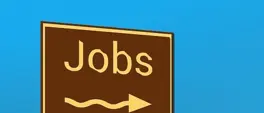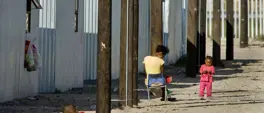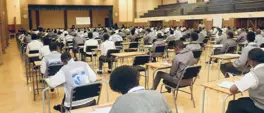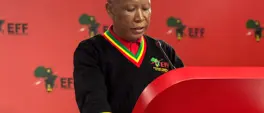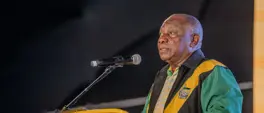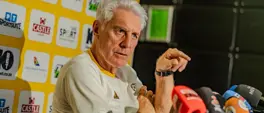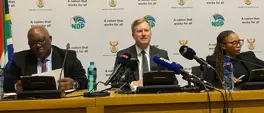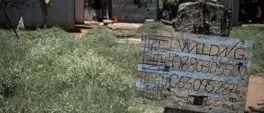JP LOUW | Why safety on Table Mountain needs all of us
JP Louw
9 July 2025 | 12:53We need a partnership with visitors to improve safety on the mountain, whether from hazards like injuries which can occur because of the terrain or potential criminals lurking in the shadows, writes SANParks' JP Louw.
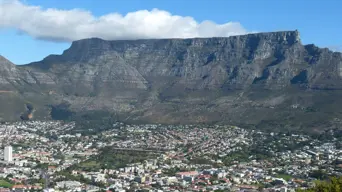
Table Mountain in Cape Town, South Africa. Picture: Falco/Pixabay
Table Mountain National Park (TMNP) is a vast park of some 225 square kilometers that is mostly openly accessible with no borders or gates. In fact, whilst others consider it to be a national park in a city, others say that Cape Town is actually a city in a national park.
The beauty of this national park is breathtaking. But beauty can become danger if basic safety rules are ignored. That’s why SANParks continues to issue safety guidelines, and recent incidents prove just how vital those messages are.
But what is the use of signage, media engagements, awareness blitzes, loud hailers, and all other efforts to get the message out when, at a partnership level, we do not seek to join efforts to push back against criminal elements?
For context and not wishing to nitpick, a few scenarios will illustrate this aptly. A young lady was stranded at about 8pm on a Friday night with no cellphone or cash. Our rangers, whilst on a routine safety patrol, came across her and offered assistance. In another instance, a group of ladies in their late teens and early twenties were also found walking from Signal Hill to Lion’s Head by themselves at night. This is unsafe, as we advise hikers not to hike at night.
For the sake of better understanding for non-Cape Town residents, Lions Head is a hill on the north side of Table Mountain that forms two beautiful peaks that are overlooking the central business district on the one side and Camps Bay and the beach on the other side. This hill then slopes down in the form of a lion’s rump, where Signal Hill is located.
The actions of rangers from Table Mountain National Park (TMNP) were nothing short of heroic. At a time when some may question the responsiveness of public services, SANParks has again proven its commitment not only to preserving nature, but also to protect people. But as we call for a partnership to work together, we are, of course, not excusing SANParks and its management of its responsibilities. For its part, SANParks has implemented the following:
• Increased the ranger corps and other support functions in TMNP by 49% (with a 43% increase in conservation staff), including increasing the SEAM Special Operations team from 16 to 40 rangers.
• Aerial deployment of the SANParks helicopter over peak visitor seasons to augment ground operations.
• Joint operations with SAPS, City Law Enforcement, Metro Police and community safety initiatives.
• Information sharing and joint deployment through the Table Mountain Safety Forum, held every 2nd week.
• Targeted operations managed through the Operations Centre of SANParks and Fusion Centre of City of Cape Town.
Debates about doing or spending more will, of course, rage on. Sadly, there are others who have no understanding of South Africa’s successful and world-class conservation model that saved species like Bontebok and the Mountain Zebra. But that is a matter for another time and space, which clearly needs SANParks to introspect about the means to provide better education and information about its successful workings.
Importantly, while we are engaged in debates, we should not lose sight of the positive strides that are being made. The recent rescues on Signal Hill and Lion’s Head are not isolated moments of luck but ongoing, strategic investments in safety efforts. SANParks doesn’t merely manage land, it manages risk, human behaviour, and unpredictable variables that come with urban-adjacent natural beauty.
But we are also well aware of the critical need to partner with users of Table Mountain National Park to push back against criminal elements. It is also against this understanding that we continue inviting all who are keen to constructively support this effort to join hands.
An interesting case scenario is from Reunion, an island in the Indian Ocean. Similar to Cape Town, they are both popular travel destinations, have natural beauty and diversity, and are surrounded by the ocean. Reunion ran a 10-year campaign with residents living around the park to switch off their lights during the Petrel’s fledgling period when they are learning to fly.
The Petrel is an endangered bird species, and this action was intended to reduce the mortality of these fledglings by switching off the bright lights.
Artificial lights were known to induce mass mortality of four species of petrels. When birds saw the night light, they thought it was daytime and would jump to learn how to fly, but could not orientate themselves and would die from the fall.
There was active support and participation from communities which also fostered a sense of national pride. Between January 1996 to December 2021, the rescue campaign prevented the death of more than 35,000 birds.
Partnership is vital between us, as SANParks, and visitors. Our discourse must be focused more on collaboration that can mobilise positive actions and adherence to safety notices that are shared repeatedly.
We need a partnership with visitors to improve safety on the mountain, whether from hazards like injuries which can occur because of the terrain or potential criminals lurking in the shadows. We can put out messages, but we need communities and hikers to embrace and act on these messages to ensure that everyone can enjoy the beauty of the mountain and its hiking trails.
JP Louw is SANParks Head of Communications and spokesperson.
Get the whole picture 💡
Take a look at the topic timeline for all related articles.
Trending News
More in Opinion

5 December 2025 04:47
MANDY WIENER: Madlanga Inquiry reveals war between 'Hopedealers' and 'The Corrupt'
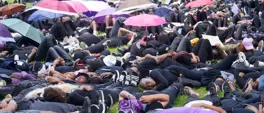
2 December 2025 12:00
TEGAN SNYMAN | Gender-based violence and femicide need to be treated as a true national crisis

1 December 2025 13:55
JAMIL F. KHAN | GNU era exposes that corruption has no race and no party boundaries
